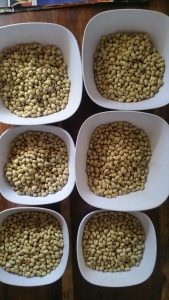- Date
- 7th February 2020
- Categories
By Dr Jaqi Lee, S2A Associates, Sustainability Systems Analysis

Technology is wonderful, it has the potential to utterly transform peoples’ lives for the better. But in today’s global society, engineers who have the bright ideas are often some way removed from the people who will ultimately use that technology. This gap causes many excellent ideas to fail: the difference between how something is designed, and how it is actually used because of where it is used.
For the MECS programme, understanding and unravelling the influences on cooking and cooking options is the beginning of the process to move people to cleaner and modern energy cooking practices. The question is where to start…
In an extreme case, if you start with the cooker, you will get something that is highly energy efficient, probably does much more than it really needs to, and is far too expensive for the target population to buy. If you start with the cooks, you may end up designing something that meets their current cooking needs in terms of cooking styles for the food they normally eat, but might not exploit fully the opportunity to challenge the status quo and develop new and better ways.
Clearly in reality, both approaches are needed. And then it gets yet more complex, as both non-variable conditions (geography, basic regional foods) and variable factors (government policy, business models) come into play.
Trying to model this complex picture of micro, meso and macro factors to determine what is the best solution becomes a chicken and egg situation.
Basic influence diagrams go some way to at least understanding what effects what, and from that, what are the model parameters of importance, e.g. what are the factors that have the greatest ripple effects through the model. For MECS, the initial influence diagram has broken naturally into 3 sections, the cook (and household), the power system, and the business model and supporting infrastructure. At the very centre, is geography (country) and location (urban, peri-urban or rural) and the user. These central facts are the key to unpicking the decisions that need to be made by both the users, and the designers of a new cooking system. For example, geography will determine if there is enough sunshine to use photovoltaic energy generation, and the available local food stuffs, traditional meals, and local food related customs. Location will affect what repair and reuse options exist, or if there is a reliable and accessible electricity supply.
MECS main objective is to change the narrative on electric cooking, and to do that, understanding the influence flows in the existing system is the first step.